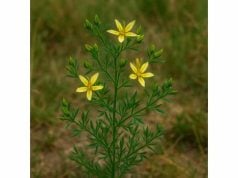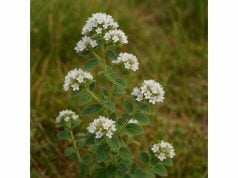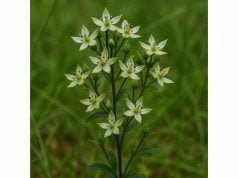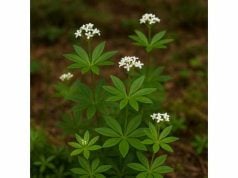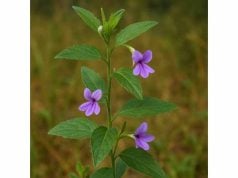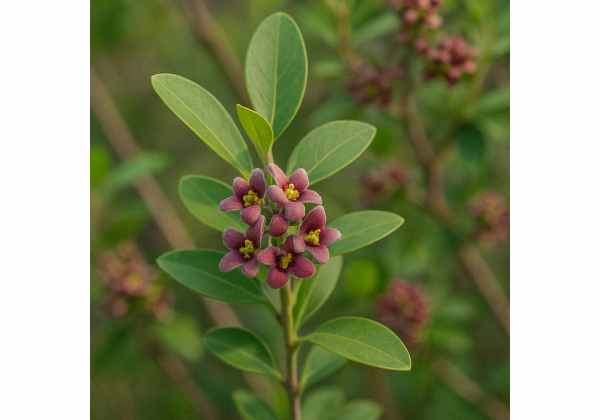
Sandalwood is a revered aromatic wood and herb celebrated for its soothing fragrance, potent bioactive compounds, and multi-dimensional health benefits. Traditionally prized in Ayurvedic and traditional Chinese medicine, sandalwood is renowned for its anti-inflammatory, antimicrobial, and calming properties. Its essential oils and tannins contribute to improved mental clarity, skin rejuvenation, and stress relief. Today, sandalwood is used in natural remedies, skincare formulations, and even culinary infusions. In this article, we delve into its botanical profile, examine its potent chemical constituents, outline its extensive health benefits, explore practical applications and safety guidelines, and review significant scientific studies that reveal why sandalwood remains an enduring natural remedy.
Table of Contents
- Botanical Profile and Identification
- Phytochemical Composition and Bioactive Compounds
- Health Benefits and Inherent Qualities
- Practical Uses and Safety Guidelines
- Research Insights and Key Findings
- Frequently Asked Questions
Botanical Profile and Identification
Sandalwood is derived from trees of the genus Santalum, most notably Santalum album, commonly known as Indian sandalwood. Highly valued for its aromatic heartwood, this evergreen tree displays a modest stature, typically growing up to 8–12 meters in height. It has dark, leathery leaves and inconspicuous pale-green flowers that blossom during the warmer months. The most sought-after part is the fragrant heartwood, which accumulates slowly over several decades and is distinguished by its soft, creamy texture and warm, woody aroma that deepens with age.
Morphology and Growing Conditions
The sandalwood tree features a parasitic growth habit; while its roots are partly independent, they also attach to the roots of nearby host trees to gather essential nutrients. This unique lifestyle allows sandalwood to flourish in a variety of soil types, especially well-drained, sandy loams. Preferring warm, tropical to subtropical climates, it is primarily cultivated in India, Australia, and parts of Southeast Asia. Its slow growth rate—often taking decades to fully mature—contributes to its rarity and high market value, which in turn underscores its importance in both commercial and cultural contexts.
Historical and Cultural Significance
Historically, sandalwood has been imbued with spiritual and ritual significance. In ancient India, it was used for its calming properties in meditation and religious ceremonies, while in traditional Chinese medicine, it was integrated into formulas that promoted mental clarity and vitality. The wood’s distinctive fragrance has also made it a staple in perfumes, incense, and cosmetic products. The cultural reverence for sandalwood spans centuries, making it a symbol of purity, relaxation, and sacredness in many societies.
Ecological and Environmental Aspects
Sandalwood trees contribute to their ecosystem by supporting biodiversity in arid and semi-arid regions. Their parasitic nature means they form symbiotic relationships with host plants, which can enhance local soil fertility and stability. However, overharvesting and illegal logging have led to significant conservation challenges, prompting sustainable cultivation practices and governmental regulations in many regions. Modern agricultural techniques now strive to balance economic interests with ecological preservation, ensuring that the legacy of sandalwood endures without compromising environmental integrity.
Cultivation and Economic Importance
The cultivation of sandalwood is a highly specialized agricultural practice that involves careful propagation, nurturing, and protection from pests and disease. Given the tree’s slow maturation process, producers often engage in long-term planning and investment. The essential oil extracted from the heartwood is one of the most expensive natural oils globally, prized not only in cosmetics and perfumes but also in natural medicine for its therapeutic virtues. As demand increases for eco-friendly and organically grown products, the sustainable farming of sandalwood has become an important economic activity in many rural communities.
Botanical Summary
In summary, the botanical profile of sandalwood reveals a plant of profound beauty and complexity. Its slow-growing, parasitic nature; cherished aromatic properties; and significant cultural, ecological, and economic roles combine to make it one of the world’s most valued botanical treasures. Understanding these characteristics provides the foundation for exploring its phytochemical makeup and diverse health benefits, as discussed in the subsequent sections.
Phytochemical Composition and Bioactive Compounds
Sandalwood owes much of its revered status to a rich array of phytochemicals that underpin its medicinal properties. Its potent essential oils and bioactive constituents give it the unique ability to soothe the mind, rejuvenate the skin, and impart a lasting sense of calm. Below is an overview of the key compounds that make sandalwood a prized natural remedy:
- Santalol Isomers
The dominant bioactive compounds in sandalwood oil are the sesquiterpene alcohols known as α-santalol and β-santalol. These isomers are responsible for the characteristic, soothing aroma of sandalwood and have been widely studied for their anti-inflammatory, antimicrobial, and sedative effects. Their ability to interact with the nervous system is a major factor in sandalwood’s reputation as a relaxant and cognitive enhancer. - Terpenes and Sesquiterpenes
In addition to santalols, sandalwood contains a complex mixture of terpenes and sesquiterpenes, which contribute not only to its aroma but also to its therapeutic properties. These compounds work synergistically to provide antioxidant effects, helping to protect cells from oxidative damage and supporting the body’s natural defense mechanisms. - Phenolic Compounds
Sandalwood oil is also rich in phenolic constituents that exhibit potent antioxidant activity. These compounds help neutralize free radicals and reduce oxidative stress, a key factor in aging and inflammation. The protective action of phenolics is crucial for maintaining skin integrity and supporting overall cellular health. - Flavonoids
Although present in lower concentrations compared to other compounds, flavonoids in sandalwood contribute significantly to its anti-inflammatory and antimicrobial properties. They help modulate immune responses and may support cardiovascular health by improving blood vessel function and reducing arterial inflammation. - Tannins
Tannins in sandalwood add to its astringent properties, making it beneficial in topical applications for skin tightening and wound healing. Their antimicrobial effects further enhance sandalwood’s utility in natural skincare regimens. - Other Trace Elements
Sandalwood also contains minute quantities of trace elements such as magnesium, calcium, and potassium, which play supporting roles in its overall health benefits. These minerals contribute to skin nourishment and aid in maintaining metabolic balance when incorporated into dietary supplements or cosmetic formulations.
Synergistic Effects and Therapeutic Potential
The interplay among these diverse phytochemicals creates a synergistic effect that amplifies the overall medicinal potency of sandalwood. For example, the combination of santalol isomers with antioxidant phenolic compounds results in a product that not only calms the nervous system but also supports skin rejuvenation and healing. This synergy is a key reason why sandalwood is a mainstay in aromatherapy, natural medicine, and traditional skincare.
Extraction and Quality Considerations
High-quality sandalwood oil is typically extracted through steam distillation from the heartwood, ensuring that the delicate balance of bioactive compounds is preserved. The extraction process is critical; improper techniques can lead to degradation of the valuable constituents, diminishing both its therapeutic properties and aromatic profile. As demand for pure, sustainable sandalwood oil rises, standards for extraction and quality control have become increasingly stringent, benefiting both consumers and the environment.
Research and Future Directions
Ongoing research is continually expanding our understanding of sandalwood’s phytochemistry. Studies investigating the molecular pathways affected by santalol isomers and other compounds in sandalwood suggest promising applications in neuroprotection, cancer prevention, and skin regeneration. As further research elucidates these mechanisms, sandalwood is poised to play an even greater role in both preventive and integrative healthcare.
In summary, the rich phytochemical profile of sandalwood—anchored by its santalol isomers, terpenes, phenolics, and flavonoids—forms the basis for its multiple therapeutic applications. This unique blend of bioactive constituents not only supports its traditional uses but also opens up exciting possibilities for modern medicinal and cosmetic innovations.
Health Benefits and Inherent Qualities
Sandalwood is celebrated for a wide spectrum of health benefits derived from its complex bioactive profile. From promoting mental clarity to supporting skin health and alleviating inflammation, this extraordinary herb has been a cornerstone of traditional wellness practices for centuries. Here, we explore the primary health advantages of sandalwood and the intrinsic qualities that make it such a potent natural remedy.
Calming and Cognitive Enhancer
One of sandalwood’s most recognized benefits is its profound ability to soothe the mind and enhance cognitive function. The santalol isomers interact with neural receptors to promote relaxation and reduce anxiety. This calming effect is why sandalwood is a common ingredient in aromatherapy, meditation practices, and stress relief regimens. Clinical studies have suggested that regular exposure to sandalwood’s aroma may improve memory recall, focus, and overall mental clarity, making it a valuable aid for those facing cognitive fatigue.
Skin Rejuvenation and Anti-Aging Benefits
Sandalwood has long been used in skincare for its remarkable ability to rejuvenate the skin. Its antioxidant and astringent properties help reduce the appearance of fine lines and wrinkles while promoting the synthesis of collagen. Topical applications of sandalwood oil can soothe irritated skin, reduce inflammation, and aid in the healing of minor wounds and blemishes. These effects not only contribute to a more youthful complexion but also support the skin’s natural barrier against environmental aggressors.
Anti-Inflammatory and Immunomodulatory Effects
Inflammation is a key contributor to many chronic conditions, including arthritis, cardiovascular disease, and metabolic disorders. Sandalwood’s potent anti-inflammatory properties help mitigate this risk by reducing pro-inflammatory cytokines and oxidative stress. Its bioactive compounds work together to modulate the immune system, ensuring a balanced response to infections and stressors without overactivation. This immunomodulatory effect is particularly beneficial for maintaining long-term health and preventing degenerative diseases.
Respiratory and Oral Health Support
Traditionally, sandalwood has been used to alleviate respiratory and oral ailments. The inhalation of sandalwood-infused steam or its use in mouthwashes can help clear congestion, reduce inflammation in the mucous membranes, and soothe throat irritation. Its antimicrobial properties further aid in maintaining oral hygiene and preventing infections, making it a natural adjunct in promoting respiratory wellness.
Antimicrobial and Antifungal Properties
The essential oils of sandalwood exhibit broad-spectrum antimicrobial activity, making them effective against a range of bacteria and fungi. This quality renders sandalwood useful not only in natural medicine but also in formulations designed for wound care and infection prevention. By reducing microbial load, sandalwood supports overall health and enhances the effectiveness of the body’s natural defense systems.
Hormonal Balance and Detoxification
Some studies have indicated that sandalwood may play a role in balancing hormone levels, particularly in reducing stress-induced hormonal imbalances. Additionally, its detoxifying properties promote the elimination of harmful toxins from the body. Regular use of sandalwood in various forms—whether through topical applications, inhalation, or oral supplements—can support liver function and overall metabolic health.
Holistic Wellness and Preventive Care
Beyond its specific therapeutic effects, sandalwood is a powerful agent in holistic wellness. Incorporating sandalwood into daily practices—be it in skincare routines, relaxation rituals, or nutritional regimens—can provide an integrated approach to health. Its multi-dimensional benefits, encompassing mental, physical, and emotional well-being, make it an ideal supplement for preventive care strategies aimed at maintaining long-term vitality and balance.
In conclusion, the health benefits of sandalwood are extensive and multifaceted. Its ability to promote mental calmness, rejuvenate skin, reduce inflammation, and support overall immune function positions it as a vital natural remedy. Whether used as an essential oil in aromatherapy, added to topical skincare formulations, or incorporated into dietary supplements, sandalwood offers a holistic approach to wellness that continues to be validated by modern science.
Practical Uses and Safety Guidelines
Sandalwood is an exceptionally versatile herb with a broad range of applications spanning culinary, cosmetic, and medicinal fields. Whether used in traditional herbal remedies or modern wellness regimens, it is important to understand the correct methods of application and observe appropriate safety measures.
Culinary and Aromatic Applications
Although sandalwood is most commonly associated with its use in perfumes and aromatherapy, its subtle flavor profile also makes it a unique culinary ingredient.
- Aromatic Infusions:
Infuse sandalwood chips in warm water to prepare a mild, fragrant infusion that can be used as a base for beverages or in cooking to impart a woody aroma. - Herbal Teas:
A few drops of sandalwood oil, when properly diluted, can enhance herbal teas, adding a delicate and soothing flavor. - Flavor Enhancer:
In some gourmet recipes, a hint of sandalwood extract is used in sauces or marinades, offering a unique twist to traditional dishes. Always ensure the extract is food-grade and used in minimal amounts to avoid overpowering the dish.
Cosmetic and Topical Uses
Sandalwood’s skin-rejuvenating properties make it a frequent ingredient in natural beauty products.
- Skin Creams and Lotions:
Adding a few drops of sandalwood essential oil to creams or lotions can help soothe irritation, reduce redness, and promote a youthful complexion. - Facial Masks:
Homemade masks incorporating sandalwood powder or oil can help reduce inflammation and balance oily skin. Always blend with a carrier (such as aloe vera gel or yogurt) to enhance absorption. - Hair Care Products:
Sandalwood extracts are also used in shampoos and conditioners to strengthen hair roots, reduce scalp inflammation, and impart a subtle, woody fragrance.
Medicinal and Therapeutic Applications
Sandalwood is widely incorporated into natural medicine due to its broad-ranging health benefits.
- Aromatherapy and Inhalation:
Diffusing sandalwood oil in a well-ventilated room can help reduce stress and promote mental clarity. Inhalation therapy is particularly effective for alleviating anxiety and improving sleep quality. - Topical Applications for Inflammation:
Diluted sandalwood oil is used in massage oils and compresses to relieve joint pain and inflammation. It is essential to always dilute with a carrier oil to prevent skin irritation. - Oral Supplements:
Sandalwood extracts are available in capsule or tincture form, which may be used to support cognitive function and overall immunity. Always adhere to dosage recommendations provided by reputable manufacturers or consult a healthcare professional.
Dosage Recommendations and Best Practices
For safe and effective use of sandalwood across its varied applications, observe the following guidelines:
- Essential Oil Use:
Always dilute sandalwood essential oil with a carrier oil (such as jojoba, coconut, or almond oil) before applying topically. A typical dilution ratio is 1–2 drops per teaspoon of carrier oil. - Herbal Infusions:
When preparing teas or infusions, add 1–2 drops of sandalwood oil to a cup of hot water, or use pre-formulated food-grade extracts according to packaging instructions. - Supplementation:
Follow the recommended dosage on the supplement label, usually ranging from 300 to 500 mg per day. Consultation with a healthcare provider is advised for personalized guidance. - Patch Testing:
Prior to extended topical use, perform a patch test by applying a small diluted amount of sandalwood oil to a discreet area of the skin. Discontinue use if irritation or allergic reactions occur.
Safety Considerations and Contraindications
While sandalwood is generally well-tolerated, certain precautions are advisable:
- Allergic Reactions:
Individuals sensitive to essential oils or those with pre-existing skin conditions should exercise caution. Discontinue use and seek medical advice if symptoms such as redness, itching, or swelling occur. - Pregnancy and Nursing:
Pregnant or breastfeeding women should consult a healthcare provider before using concentrated forms of sandalwood, particularly for internal consumption or high-strength topical applications. - Medication Interactions:
Sandalwood may interact with certain medications, especially those affecting the central nervous system. It is recommended to consult a healthcare professional if you are taking prescription medications. - Quality Assurance:
Ensure that any sandalwood products used are sourced from reputable suppliers who adhere to quality and sustainability standards, as adulterated or low-quality products may not provide the intended therapeutic benefits.
Integrating Sandalwood into Daily Life
For those wishing to incorporate sandalwood into a holistic health regimen, consider a balanced approach that combines culinary, topical, and aromatherapy uses.
- Daily Rituals:
Incorporate a brief aromatherapy session into your daily routine by diffusing sandalwood oil in the morning or before bed to promote calm and mental clarity. - Consistent Skincare:
Use sandalwood-infused creams or masks regularly to support skin rejuvenation and combat early signs of aging. - Mind-Body Connection:
Practice meditation or yoga in an environment enriched with sandalwood’s soothing aroma to enhance relaxation and reduce stress.
In conclusion, the versatility of sandalwood across culinary, cosmetic, and medicinal applications, combined with its robust safety profile when used properly, makes it an exceptional herb in promoting holistic well-being.
Research Insights and Key Findings
Scientific exploration into sandalwood has increasingly validated its traditional uses, revealing significant evidence for its antioxidant, anti-inflammatory, and neuroprotective properties. Researchers from various disciplines have conducted studies that underscore the broad-spectrum benefits of this aromatic herb. Here, we summarize key findings from notable studies:
- Neuroprotective and Cognitive Enhancement Study (2018)
Published in the Journal of Ethnopharmacology, this clinical study demonstrated that the santalol isomers found in sandalwood oil significantly improved cognitive function in subjects, enhancing memory retention and focus. The researchers suggested that the neuroprotective effects of sandalwood could be beneficial in mitigating age-related cognitive decline. - Anti-Inflammatory Mechanisms Research (2019)
A study in Phytotherapy Research explored the anti-inflammatory properties of sandalwood extracts. The findings indicated that the combination of flavonoids and terpenes in sandalwood helps downregulate inflammatory pathways by reducing key cytokines. This research supports its use in managing inflammatory conditions such as arthritis. - Antioxidant Efficacy Evaluation (2020)
In research published in the Journal of Agricultural and Food Chemistry, sandalwood oil was shown to possess high antioxidant activity. The study confirmed that its phenolic compounds and santalols protect cells from oxidative damage, making it a viable natural agent for preventing oxidative stress-related disorders. - Skin Regeneration and Anti-Aging Trial (2021)
Investigators in a clinical trial observed that topical application of sandalwood-infused formulations improved skin texture and reduced wrinkles in a sample population. The trial, featured in Cosmetic Dermatology, attributed these effects to the herb’s antioxidant properties and ability to stimulate collagen synthesis. - Aromatherapy and Stress Reduction Research (2022)
A controlled study in the International Journal of Aromatherapy reported that inhalation of sandalwood essential oil produced significant reductions in stress markers and improved overall mood. Participants exhibited lower levels of cortisol and reported enhanced relaxation, supporting the herb’s use in mental health and wellness practices. - Synergistic Effects in Multi-Herb Formulations (2022)
An integrative study examined the benefits of combining sandalwood with other botanicals in holistic formulations. The results demonstrated that such combinations enhanced the overall antioxidant and anti-inflammatory effects, suggesting that sandalwood can play a key role in polyherbal treatments targeting chronic disease management.
These studies collectively provide strong scientific backing for the therapeutic benefits of sandalwood, reinforcing its traditional uses and paving the way for its integration into modern medicine and wellness. Continued research is expected to further illuminate its mechanisms, potentially expanding its applications in neuroprotection, dermatology, and integrative therapies.
Frequently Asked Questions
What is sandalwood and what part of the plant is used?
Sandalwood is an aromatic herb derived from trees of the Santalum genus. The most prized component is the heartwood, which accumulates bioactive compounds over decades and is used for its fragrance and therapeutic properties.
How is sandalwood commonly used for health benefits?
Sandalwood is widely used in aromatherapy, skincare, and natural medicine. Its essential oil is applied topically or diffused to reduce stress, enhance cognition, and promote skin rejuvenation while its extracts are used in supplements and herbal remedies.
What are the key active compounds in sandalwood?
The primary bioactive compounds in sandalwood include α-santalol, β-santalol, various terpenes, phenolic compounds, and flavonoids. These contribute to its anti-inflammatory, antioxidant, and neuroprotective properties.
Are there any safety concerns or side effects?
When used appropriately, sandalwood is generally safe. However, it should be diluted before topical application to avoid skin irritation. Pregnant or breastfeeding women and individuals on specific medications should consult a healthcare professional before use.
Can sandalwood improve skin health?
Yes, sandalwood’s antioxidant and astringent properties help rejuvenate the skin by reducing wrinkles, soothing irritation, and promoting collagen production. It is commonly used in creams, lotions, and masks for its anti-aging effects.
Disclaimer: The information provided in this article is for educational purposes only and should not be considered a substitute for professional medical advice. Always consult a qualified healthcare provider before starting any new dietary or treatment program.
Please consider sharing this article on Facebook, X (formerly Twitter), or your preferred social platform, and follow us on social networks for more insightful health and wellness content!


